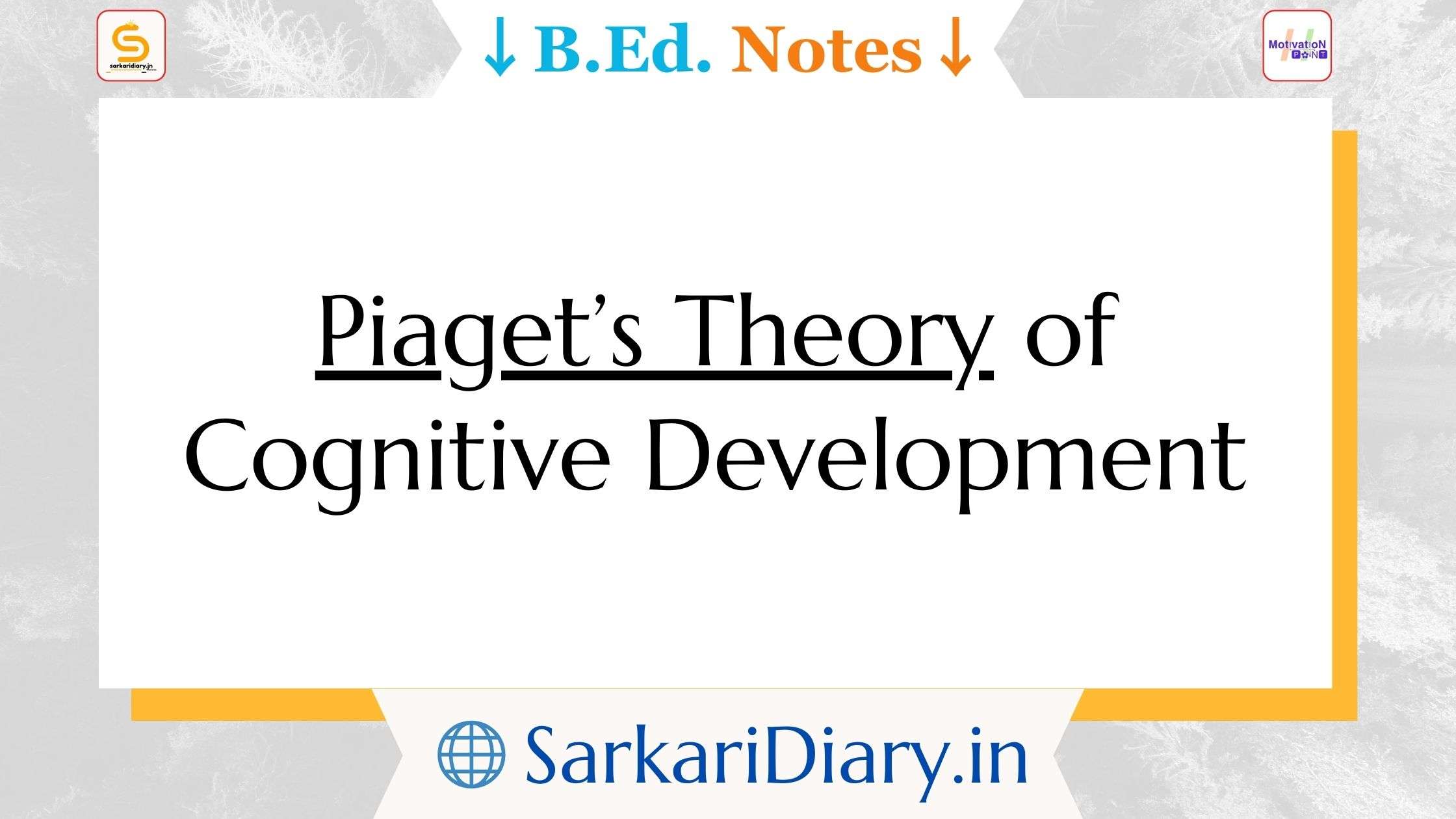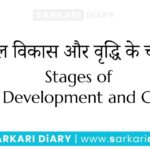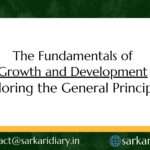Development refers to the growth, adaptation and change that occur throughout life. Through the process of evolution we have all changed significantly in many different ways. While changes to one’s physical structure (physical development) may be the most obvious form of development. People also develop the ability to produce and use language (language development), interact with others (social development), and process information and derive meaning from experiences (cognitive development). Various theories have been developed by psychologists that would identify the importance of each development. ,
Cognitive Theory of Development

Swiss psychologist Jean Piaget is best known for his theory that explains how humans gather and organize information and how this process changes developmentally. Piaget used the diagnostic-description method to collect his research data. This method involved asking children carefully selected questions and carefully observing the children’s behavior as well as recording their responses. Although he often observed small numbers of children, his observations were longitudinal in nature, that is, following the development of the same children over a period of years. While much of his early work was based on systematic observation of his own three children, a large part of his later work was based on statistical friendships.
Basic Cognitive Concepts
Piaget identified four concepts that he used to explain how and why cognitive development occurs. These include schema, assimilation, adjustment, and equilibrium.
- Schema: Piaget used the term scheme to refer to the cognitive structures by which individuals intellectually adapt to and organize their environment. Based on his interests in biology. Piaget postulated that the mind has mental structures or schemata, just as the body has physical structures. Piaget suggested that when an organism encounters stimulation or a new experience, and relies on its structures to assist in that adaptation. Thus, just as the human body is “organized’ into various structures such as the stomach, kidneys etc., which assist in ongoing adaptation, so too does the mind have structures or ways of organized experiences, which facilitate adaptation to the experiences.
- Assimilation: This process of integrating new perceptual, motor or conceptual material or experiences into existing schemata is termed assimilation. Teachers often facilitate the student’s use of assimilation by connecting the new material to the student’s existing knowledge. Thus, often watching a nature film, a child may discover new animals to add to existing groups of animals she has already stored in memory.
- Accommodation: When this process of assimilation is not possible because there are no schemata into which to fit new data or the characteristics of an available schema, a new schema will have to be developed in order to adopt to these new and unique experience. This process of creating a new schema Piaget termed accommodation.
- Equilibration: Piaget hypothesized that a self-regulatory process called equilibration operated in all children and adults. This equilibrium is a state of balance between assimilation and accommodation. Piaget believed that one of the most effective methods for motivating a child was to set up a state of cognitive disequilibrium in which the child is thrown into “cognitive conflict” when he expects something to happen a certain way and it does not.
Piaget’s Stages to Cognitive Development
According to Piaget, cognitive development unfolds as the child passes through four district and qualitatively different stages: the sensorimotor, pre-operational, concrete operation, concrete operation and formal operational stages:
- The cognitive periods and appropriate stages
- The Sensorimotor period (birth to 18-24 months)
- The Pre-operational period (2 to 7 years)
- The Concrete operational period (7 to 11 years)
- The Formal operational period (over 11 years)
(I) The Sensorimotor Period
Piaget’s first stage of intellectual development, in which the child moves from the reflective activities of reaching, grasping, and sucking to more highly organized forms of activity. The infant begins to understand that there is a difference between him and the rest of the world and that the sensory experiences he receives actually indicate the existence of certain types of “objects” or “phenomena” that exist outside him.
This development of object permanence expands the infant’s view of the world beyond that which is immediately and directly experienced. Thus, the infant can start exploring objects that are out of sight. During this period, the infant develops object permanence, the realization that objects exist even if they are out of sight.
Another milestone of the sensory-motor period is the development of the beginnings of problem-solving abilities. While in the beginning it is largely based on trial and error, by the end of the term, a problem-solving approach is planned.
(II) The Pre-operational period
The stages are Piaget’s theory of cognitive development, in which a lack of logical operations forces children to make decisions based on their perceptions. The major development during the pre-operational period is the ability to represent objects and events or use symbolic functions. You may recall that at the end of the sensorimotor period, children are able to engage in activities that involve mental representations such as pretending.
Between the ages of two and seven, mental abilities fully develop as advances in language development and imagination enable the child to think and play in new ways. Apart from symbolic functions the pre-operational period is characterized by several unique features.
- Egocentrism: Piaget described the pre-operational children’s thinking as egocentric. That is, pre-operational children cannot put themselves in other stages or someone else’s perspective. Consider the four year old who can label own right hand and left hand, but cannot identify the right and left hands of a friend. Piaget emphasized that egocentrism has nothing to do with selfishness, but merely reflects the qualitative limitations in thinking apparent during the pre-operational stage. As the child gets older, egocentrism vanes. By age six, children exhibit, less egocentrism than at age three.
- Centration: Another characteristic of pre-operational thought is centration or concentration as only one aspect of an object or activity, usually the aspect that is perceptually dominant. For instance, a child of four or five is presented with two rows of objects in which one row contains nine objects and a second but longer row, contain seven objects. The pre[1]operational child will typically select the longer row as having more objects even though the child knows that nine is more than seven.
- Inability to reverse operation: A third feature of pre-operational thought is inability to reverse one’s thinking. Understanding subtraction is a prime example of this feature. Pre-schoolers may have learned that 1+1=2 but cannot comprehend that 2-1=1 or ponder the case of the pre[1]operational child who is presented with two identical glasses, both short and fat in shape. Then water from one of the glasses is poured into a tall thin glass. The child is then asked if the glasses contain the same amount of water. In order to answer correctly, the child would have to be mentally able to reverse the operation of pouring the water from the original short, fat glass into the tall this one. But pre-operational children typically respond that the tall, thin glass contain more water.
The later illustration shown that pre-operational children are not yet ready to engage in conservation or to conceptualize that the quantity or amount of matter stays the same despite changes in an irrelevant dimension.
- Animism: A fourth feature of the pre-operational child is animism. An animistic thinker attributed human characteristics to inanimate objects. For instance, consider that pre[1]operational child who is asked the question where do boats go at night”? and responds “to bed” or ponder the drawings of a pre-operational child, which feature a face drawn on a sun or a moon. Piaget believed that this tendency decreased by age six or seven as the child became more cognizant of his or her own personality.
- Transductive reasoning: Finally, the pre-operational child exhibits fifth characteristics known as transductive reasoning. That is, he or she reasons neither deductively nor inductively. Deduction is reasoning from general to specific. If we acknowledge that all men are mortal and Socrates was a man, then Socrates has to be mortal. Inductive reasoning in contrast involves establishing generalization from specific instances. However, according to Piaget, the thinking of pre-operational children is somewhere in between moving from particular without touching on the general.
(III) The Concrete operational Period
Unlike pre-operation, in concrete operation the child now engages in logical thought to solve concrete problems. At this stage of development the child’s reasoning is guided by cognitive activity rather than being dominated by immediate experience, as was the case with both pre-operational thought.
- Decentering: A child in the concrete operational stage is able not only to imagine things independent of their immediate experience, but now is capable of employing all of the perceptual features of an experience (decenter) in order to derive logical solutions to concrete problems.
- Reversibility: Piaget proposed that the most important of these was reversibility. A concrete operational child understands that a model of an airplane, which had formerly been a ball of clay, can be changed back into a ball of clay.
- Conservation: The fact that the child in the concrete operational stage of development is able to decenter and to reverse operational facilities the ability to develop conservation skills. A child is able to solve conservation of number problems around the age six, area and mass problem around seven or eight, and volume problem by eleven or twelve.
- Classification: Other significant changes in problem-solving ability can be seen in the concrete operational child’s ability to engage in classification. Before the age of seven children typically form classifications of objects along one dimension. That is, children can classify according to color or shape. Thus, presented with a group of white and black circles, squares and triangles, a child may classify them into two groups, all the while and all the black designs together.
- Seriation: Seriation is the ability to mentally arrange a series of elements according to increasing or decreasing size, volume, weight or some other dimensions. A child in the concrete operational stage begin to employ strategies such as searching for the smallest stick, then the next etc to develop the solution or seriation problems.
(IV) The Formal operational stage
With the beginning of Piaget’s fourth stage of cognitive development, comes the ability to perform formal operations, solving abstract problems. The development of formal operations makes the ability to reason and construct useful for all classes of problems. During this stage of development, thinking has several unique structural properties, which are hypothetical, analogical, and deductive.
- Hypothetical reasoning: Hypothetical reasoning transcends perception and memory and deals with things not in the realm of direct experience. For instance, if a logical argument is prefixed by the statement” suppose coal is white” a concrete operational child will invariably say that is not possible and therefore the question cannot be answered. However, a formal operational child will readily accept the assumptions of the argument and goon to reason about its logic.
- Analogical reasoning: Analogical reasoning in which children can fully explain why an analogy works and how each pair of the analogy is connected to the other, also emerges in formal operations.
- Deductive reasoning: Deductive reasoning is reasoning from generalities to specifics. The type of reasoning contained in a syllogism is deductive reasoning. Consider the child who correctly responds to the following complex if- then statement. If all animals have four legs and if this table has four legs then is this table an animal? The child who correctly responds reason that although both tables and animals have four legs, a table cannot be an animal because it is not a living creature.
- Reflective abilities: In addition to the above described abilities, formal operational thinkers possess a sophisticated set of reflective abilities. For instance, they are able to systematically generate all possible solutions to a problem or engage in combinational reasoning.







